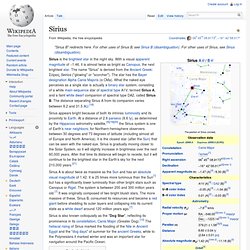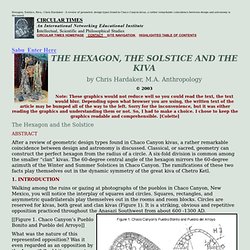

World Grid.
Chill Out - The Orbit [HD_1080p] ISS: An Earth Orbit. Sacred Geometry: Flower of Life. Search for Extraterrestrial Intelligence & Civilizations. Astronauts in orbit around the Earth often gaze down on a world lit at night by city lights.

Now researchers suggest that scientists could detect alien civilizations from similarly bright lights. Science fiction has long imagined entire planets covered with cities. Alien Civilizations in Universe. Introduction This calculation is just a rough one because galaxies vary a lot.

There are also things called globular clusters that can contain hundreds of thousands of stars. I will be talking about type 0, type 1, type 2 and type 3 civilizations here. You might want to watch this video to understand exactly what that means: Nibiru's Orbit, The Red Star of Bethlehem, Sonic Levitation, Ancient Wisdom by David Millo. Space Zen: Will Humans' Brains Change During Travel in Outer Space? -A Galaxy Insight. In February, 1971, Apollo 14 astronaut Edgar Mitchell experienced the little understood phenomenon sometimes called the “Overview Effect”.

He describes being completely engulfed by a profound sense of universal connectedness. Without warning, he says, a feeing of bliss, timelessness, and connectedness began to overwhelm him. He describes becoming instantly and profoundly aware that each of his constituent atoms were connected to the fragile planet he saw in the window and to every other atom in the Universe. Cosmos, Moby’s Song ‘We Are All Made of Stars’, Universe & Solar System. The theory that everyone and everything on Earth contains minuscule star particles dates back further than Moby's popular 2002 song "We Are All Made of Stars.

" In the early 1980s, astronomer Carl Sagan hosted and narrated a 13-part television series called "Cosmos" that aired on PBS. On the show, Sagan thoroughly explained many science-related topics, including Earth's history, evolution, the origin of life and the solar system. "We are a way for the universe to know itself. Some part of our being knows this is where we came from. We long to return. His statement sums up the fact that the carbon, nitrogen and oxygen atoms in our bodies, as well as atoms of all other heavy elements, were created in previous generations of stars over 4.5 billion years ago.
"All organic matter containing carbon was produced originally in stars," Impey told Life's Little Mysteries. How star stuff got to Earth. Astronomy News. Through The Wormhole: Are There Parallel Universes? Since the ancient Greeks first speculated that everything they observed in reality was the result of the interaction of tiny particles they called atoms, great thinkers have tried to find a single mathematical formula that governs and explains the workings of the entire universe. So far, though, even minds as brilliant as physicists Albert Einstein and Stephen Hawking have been unable to come up with that single grand equation of everything, also known as the theory of everything, or the final theory. Hollow Earth. Orion (constellation)
The earliest depiction that has been linked to the constellation of Orion is a prehistoric (Aurignacian) mammoth ivory carving found in a cave in the Ach valley in Germany in 1979.

Archaeologists have estimated it to have been fashioned approximately 32,000 to 38,000 years ago.[2][3][4] The distinctive pattern of Orion has been recognized in numerous cultures around the world, and many myths have been associated with it. Cygnus (constellation) Cygnus contains Deneb, one of the brightest stars in the night sky and one corner of the Summer Triangle, as well as some notable X-ray sources and the giant stellar association of Cygnus OB2.

One of the stars of this association, NML Cygni, is one of the largest stars currently known. Sirius. Sirius appears bright because of both its intrinsic luminosity and its proximity to Earth.

At a distance of 2.6 parsecs (8.6 ly), as determined by the Hipparcos astrometry satellite,[5][19][20] the Sirius system is one of Earth's near neighbors; for Northern-hemisphere observers between 30 degrees and 73 degrees of latitude (including almost all of Europe and North America), it is the closest star (after the Sun) that can be seen with the naked eye. The Mayan Calendar Portal. Exploring the UVG Grid with Google Earth.
Basic Instructions for Exploring the UVG Grid with Google Earth Bethe Hagens Nazca The basic Google Earth program is available for PC and Mac—free!

THE HEXAGON SOLSTICE KIVA Dr. Chris Hardaker Dr. Colette M. Dowell Dr. Robert M. Schoch. Hexagon, Solstice, Kiva,- Chris Hardaker - A review of geometric design types found in Chaco Canyon kivas, a rather remarkable coincidence between design and astronomy is discussed.

An International Networking Educational Institute. Gallery. A Brief, Wondrous Tour of Earth (From Outer Space) 'Something may come through' dimensional 'doors' at LHC. High performance access to file storage A top boffin at the Large Hadron Collider (LHC) says that the titanic machine may possibly create or discover previously unimagined scientific phenomena, or "unknown unknowns" - for instance "an extra dimension".

Alternative news, science, culture, religion, ufos, alien encounters. The Universe. Is NASA Covering Up the 100-Year Starship? - FoxNews.com. NASA appears to be debating a way to permanently colonize another planet, boldly going where no one has ever gone -- and where no one could come back, some fear.Paramount A NASA official may have made a 35-million-mile slip of the tongue. The director of NASA's Ames Research Center in California casually let slip mention of the 100-Year Starship recently, a new program funded by the super-secret government agency, DARPA. In a talk at San Francisco's Long Conversation conference, Simon “Pete” Worden said DARPA has $1M to spend, plus another $100,000 from NASA itself, for the program, which will initially develop a new kind of propulsion engine that will take us to Mars or beyond.
There's only one problem: The astronauts won't come back. The 100-year ship would leave Earth with the intention of colonizing a planet, but it would likely be a one-way trip because of the time it takes to travel 35 million miles.